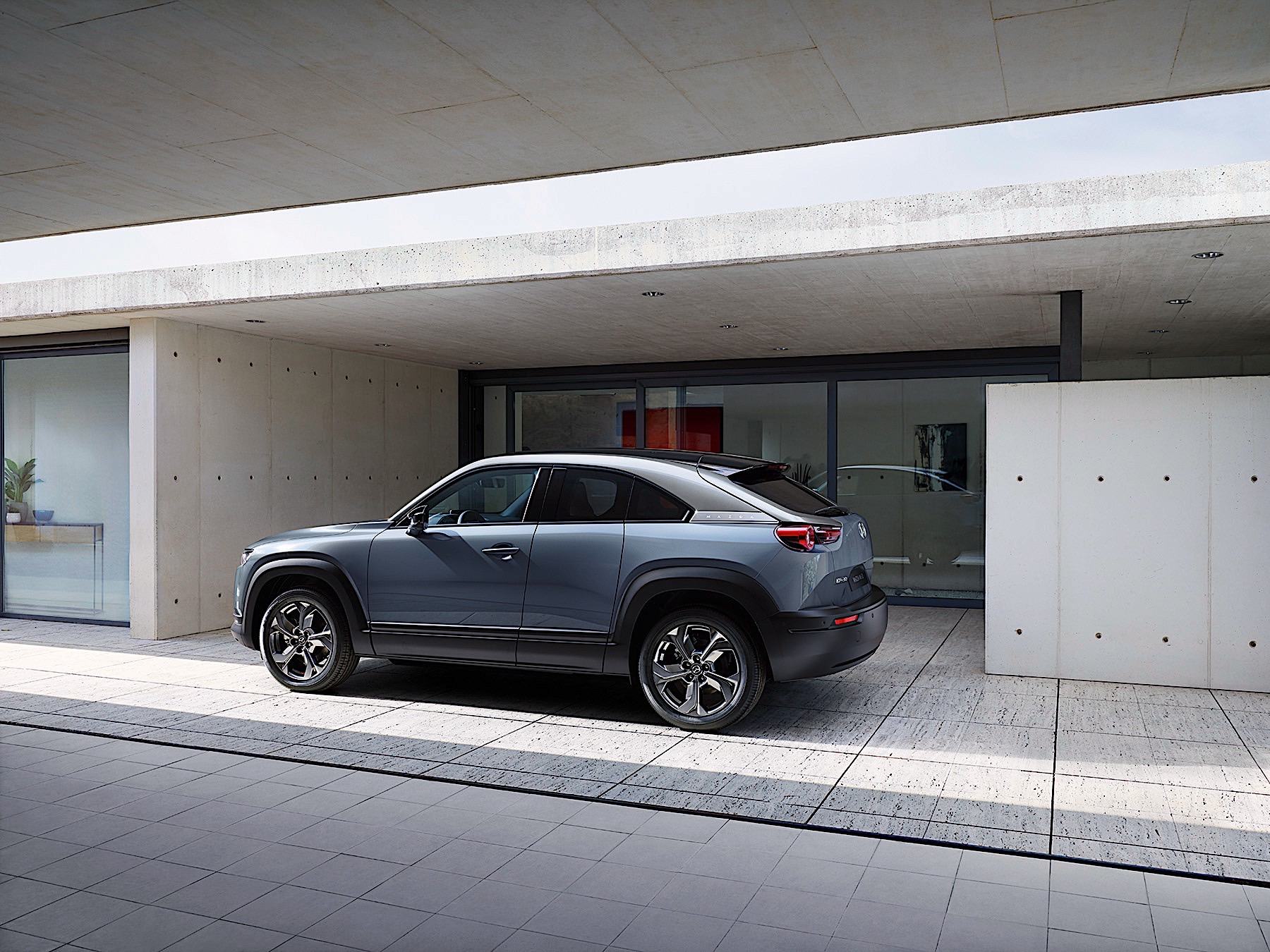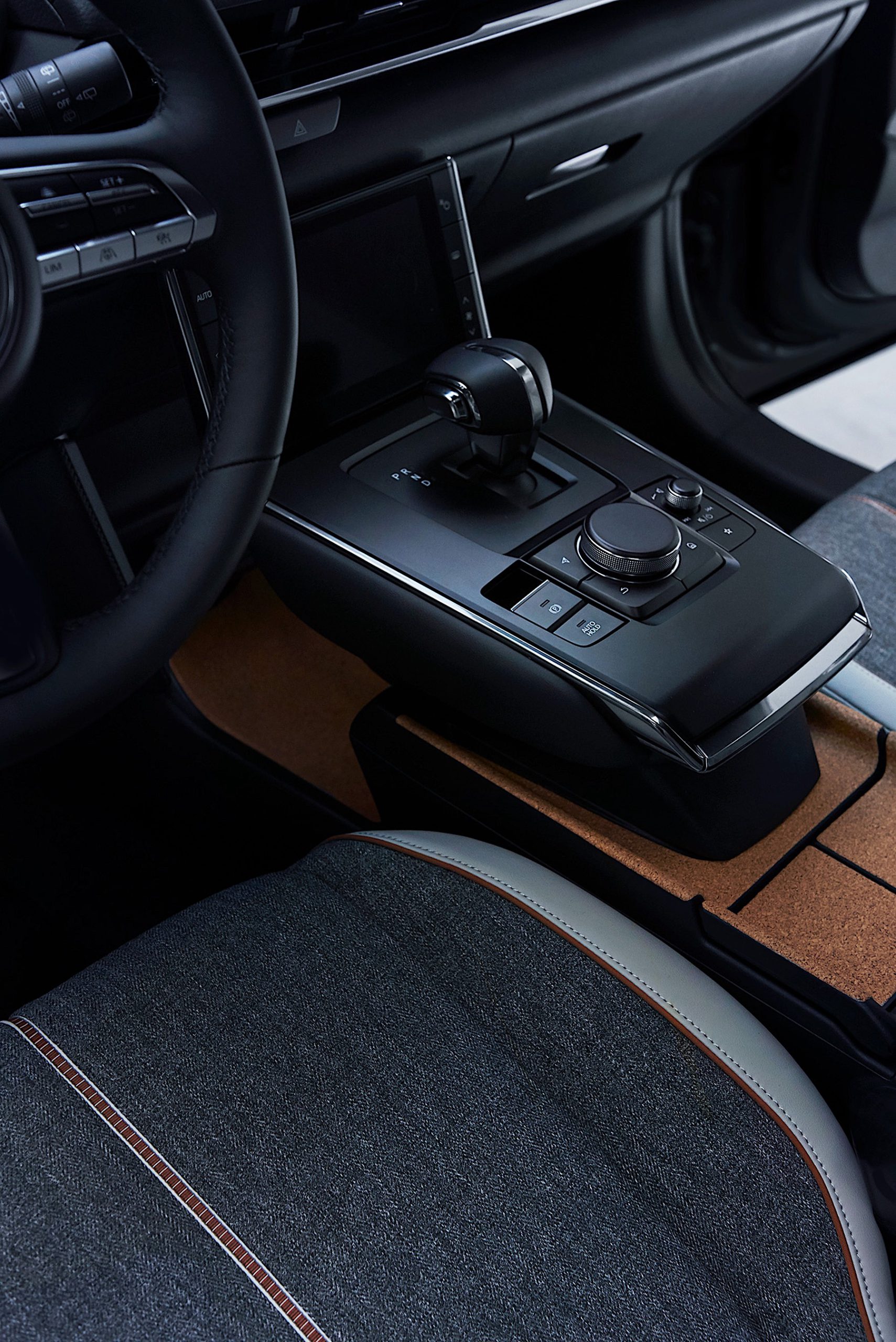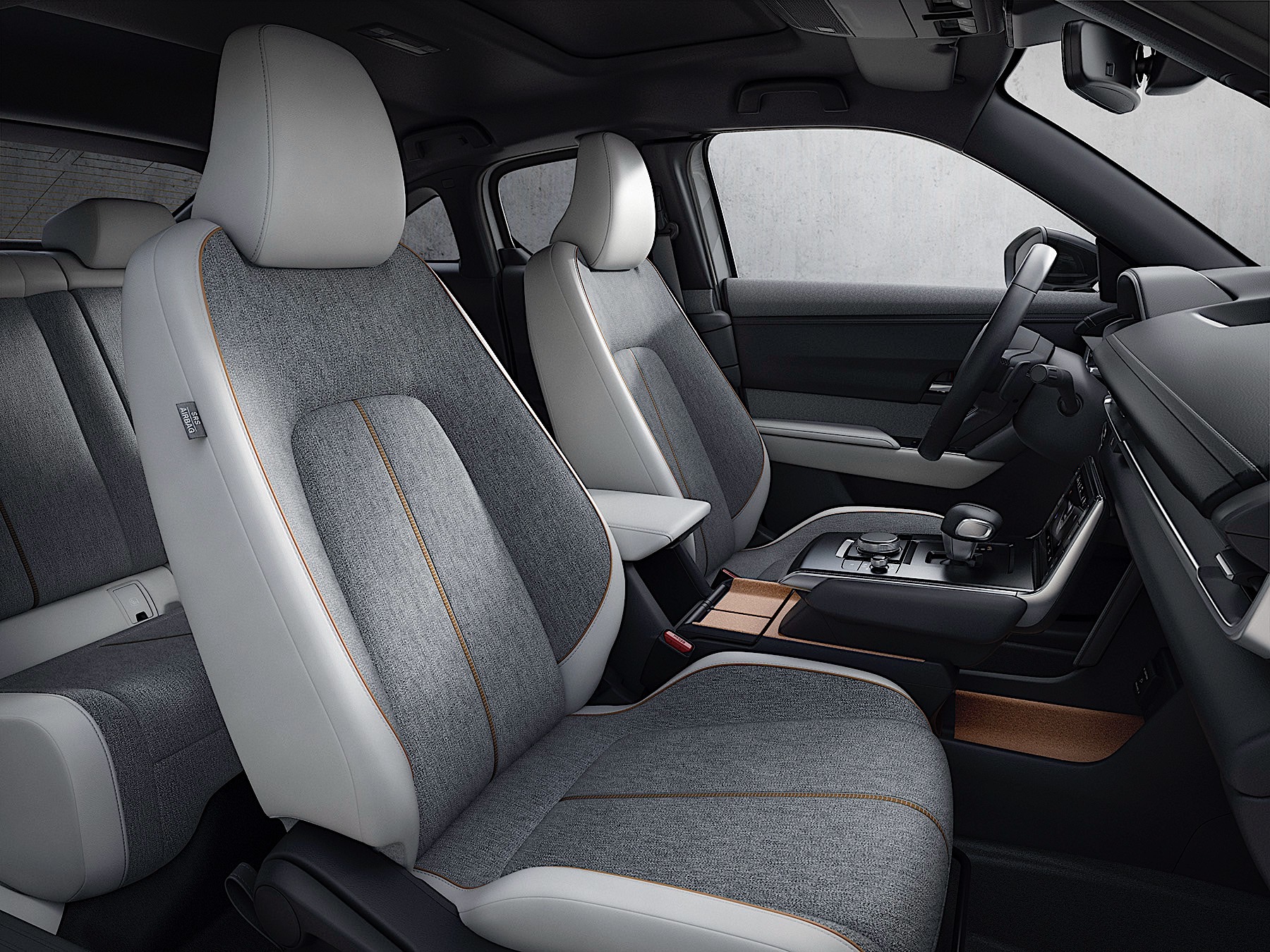During the presentation before driving the 2022 Mazda MX-30 near the company’s headquarters in Irvine, California, we were told that the MX-30 is a proper Mazda. We were told to expect driving dynamics similar to the company’s other models — possibly even Miata — with this front-drive EV.
And while it’s definitely not as fun as a Miata, it does drive well. It’s like a CX-30 without the gasoline engine. That’s a good thing. But the car ownership experience is more than just a nice drive on a back road, so how does the MX-30 stack up?
You’ll have to look at it from two difference lenses. If a car with only 100 miles of total EPA rated range is enough for your day-to-day, then keep reading. If there’s no way a 100 mile range can suit your driving habits, then you might as well stop now. If you’re on the fence? Keep reading and we’ll help try to qualify you to see if the MX-30 should be on your list.
We have a lot to cover, so let’s get going.
The elephant in the room is the 100 miles of range. During out first drive, we were unable to perform a proper range test. It’s always difficult to do something like that on a drive program. But it should be worth nothing that the long-term trip computer said we were going 2.8 miles per kWh of energy consumed. That’s less efficient than a Model 3 or Model Y, but more efficient than an ID.4.
Mazda says the battery pack on board is a 35.5 kWh pack. That means with the displayed efficiency the total range would be 99.4 miles. So the 100 miles seems reasonable, as long as you’re in Southern California weather.
So why only 100 miles of range? Mazda claims that it’s so the car can have better driving dynamics. A 35.5 kWh pack weighs 683 pounds, and the single motor drive unit weighs 287 pounds. That keeps total combined weight at less than half a ton.
The front motor makes 143 horsepower and 200 lb-ft of torque. We weren’t able to test 0-60 mph time, but it was quick enough for the day to day, but one of the slower accelerating EVs we’ve tested. On a closed course the MX-30 tops out at 90 mph.

The peak charge rate of the MX-30 is just 50 kW, and Mazda claims the time it takes to charge from 20% to 80% is 36 minutes. That’s basically 36 minutes for 60 miles of range. A similarly-priced Hyundai Kona EV adds 180 miles of range in 47 minutes.
If you haven’t already figured it out, the MX-30 is not a car for trips. Rather, it’s an around-the-town runabout for daily errands and the trip back and forth to work. Mazda has considered that buyers might need to occasionally take a trip, and offers access Mazda loaner vehicles up to 10 days per year for the first three years of ownership.
Exterior design leans heavily on Mazda’s Kodo design concepts, with this car looking far more striking than the CX-30. It even features clamshell doors like on the RX-8. An offset color roof gives the car the impression that it’s wearing a helmet. Black cladding around the wheels gives the impression that it sits a bit higher off the ground and is more crossover than hatchback.

Inside, Mazda uses recycled and up cycled materials extensively. Mazda uses cork in several places because Mazda started as a company that proceeded cork in 1920. It’s attractive looking in the interior, covering the cupholders, though the way the cupholder covers open — the are hinged at the back — don’t make sense ergonomically.
The floating center console covers up the USB port for connection to the infotainment system, and it’s positioned on the right side beneath the console, giving us the impression that it was designed for a right-hand drive market. A female colleague couldn’t reach the plug at all without having to unbuckle her seat belt and basically climb out of the driver’s seat.
The floating console also contains the rotary knob for the infotainment system. It’s Mazda’s standard infotainment system and has all he features you’d expect from a modern head unit. The screen is crisp and colorful, though it’s placement on the dash is too far away to reach. That’s OK, though, because it’s not a touch screen.
The rotary knob is easy enough to use, and once you figure out how to use it, it’s easy to hop in and out of Apple Car Play or Android Auto. It’s not the best system in the business by any stretch, but we don’t mind it.
The climate controls have a touch screen in front of the shifter to control the system. It works well enough, but does need a solid press to active a function. Our biggest concern is that’ll it’ll be a fingerprint magnet.
The seats are comfortable and it’s easy to find a comfortable driving position. Mazda’s digital gauge cluster mimics an analog design, and everything you need is right in front of you. It lacks customization, but really how many buyers are constantly fidgeting with the screens in front of them? A heads up display rounds out the technology.

The material at the top of the door trims is interesting. It’s made from recyclable PET bottles, which is great. It looks, and feels, a bit more like packing material than car interior but really it just feels different. That doesn’t mean bad, as we haven’t lived with it long term. It’s just different.
Mazda has a whole safety suite available, including lane centering and adaptive cruise control. There’s both rear cross traffic alert and new front cross traffic alert. The front cross traffic system works, but we find it a bit annoying as it often beeps when trying to pull out of a driveway onto a main thoroughfare. But I’m sure it’ll help people who aren’t paying attention.
You’ll want the blind spot monitoring though, because the only real issue we had in diving the Mazda MX-30 was the blind spots out the rear three quarter. If you look over your shoulder to change lanes you’ll see nothing. The way the roof slopes down just blocks all your visibility, and is one of the worst blind spots we’ve experienced in a compact crossover.
The rear window on the hatch isn’t that small, though, so the rest of the visibility is good.
We’re also not a fan of the clamshell doors. It might be easier to get in and out of the compact rear without the pillar blocking the way, but you have to open the front doors first before you can open the rear doors. And you most close them in reverse order. If you have a kid in the back seat who has a bladder about to burst, it’s just an extra annoying step to set them free.
Out on the road, the MX-30 is quiet. Mazda does create some fake electric noises, the way Ford does with the Mach-E, to help communicate the perception of speed. We found it quite agreeable, but we’re fond of the sounds usually in a sporty EV.
On a twisty canyon road the MX-30 drives well. It’s easy to keep speed up in twisty corners, allowing you to keep up with other cars that wouldn’t expect you to stay with them. There is something to the way Mazda tunes its cars.
On longer straights though you’ll be left in the dust because the weight — even if it’s less than other EVs — combined with the horsepower makes the car slow to accelerate. It’s not unusable by any stretch, but an EV like the Leaf accelerates quicker.
So if you’re still reading the ultimate conclusion is this; if you can live with a maximum 100 miles of range, this is a nice little car.
But that’s not the end of the story, because Mazda is only selling the MX-30 in California. It’s not a compliance car, but we believe it is a test car to see if Mazda can build and ship an EV before we start receiving other vehicles later this decade. Also for the first year, Mazda is capping sales to 560 units.
You read that right. Five hundred and sixty units total will be sold. It might be a rare sight to see one out on the road.
Now let’s talk about price. Thankfully the company is only selling it in California, where the maximum number of EV incentives exists. The starting price for the MX-30 is $34,645 with destination. Our optioned out Premium Plus Package version was priced at $38,650 with destination.
Ultimately that’s a lot of money to spend on a second car for commuting. With Nissan’s new pricing on Leaf, you can get more range for less money. A Kona EV also has more range for similar cash. While we ultimately liked the MX-30 — despite some ergonomics issues — the value proposition just isn’t there.
If you qualify for all of the state and federal incentives, you can theoretically shave around $10,000 off the price of the vehicle. But you can do the same on the other EVs mentioned in this article (apart from Tesla).
So if you want a strong handling commuting car that focusing more on driving dynamics than range, and you live in California (though the car will eventually be sold nationwide), then you might want to give the MX-30 a look. But for the rest of us, we’ll need the improved EV infrastructure that we’ll have in 3-5 years before the car makes a lot of sense.
